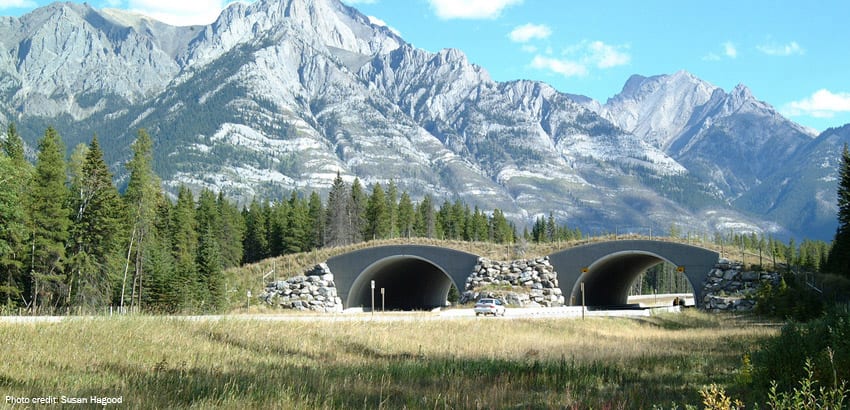
Apr 30, 2019 Corridors & Crossings: Advancing Connectivity Conservation
Across the globe, the movement of species and the flow of ecological processes are being interrupted by human development. Natural areas are losing vital connections once used by wildlife to migrate, disperse, mate, feed, and thrive. This ongoing fragmentation is leaving nature susceptible to a wide range of maladies including habitat destruction, species extinction, and loss of critical ecosystem functions. To protect these vital interconnections, the Center for Large Landscape Conservation (CLLC) fosters networks of communities and institutions to identify the threats to ecological connectivity and prioritize science, policy, and management actions across terrestrial, freshwater, and marine environments. Specifically, CLLC’s Corridors & Crossings Program is accelerating large-scale conservation across North America and internationally.
The program’s primary focus is on the protection of wildlife corridors, reducing species mortality and barriers to movement, and responding to the growing excitement and demand for integrative solutions that deliver both large-scale and site-specific measures.
Corridors & Crossings in North America works across federal, tribal, state/provincial, and private lands and waters to maintain and enhance links between protected areas and other high-quality habitats across the continent. To achieve this aim, it works collaboratively with partners on the following objectives:
- Advance policy frameworks that systematically improve habitat connections and reduce wildlife-vehicle collisions;
- Expand the network of partners to champion the protection of corridors and next generation of wildlife crossing structures;
- Deliver innovative avoidance and mitigation strategies and wildlife crossing designs to inspire future projects and plans; and
- Promote sustainable funding streams, including public-private partnerships, to leverage resources to pay for protecting wildlife movement.
Through ongoing and new initiatives, activities in North America over the last year have included:
- Working with the Blackfeet Nation to develop the first-ever Reservation-wide Animal-Vehicle Collision Reduction Master Plan to address conflicts between animals and vehicles moving within and across the Blackfeet Nation.
- Publication of a “Toolbox” for state legislators interested in addressing habitat connectivity issues in their states entitled: Wildlife Connectivity: Opportunities for State Legislation.
Providing support, technical expertise, and language for the introduction of the National Wildlife Corridors Act, as well as state legislative efforts to protect wildlife corridors (including the New Mexico Corridor Bill which was signed into law in 2019).
Corridors & Crossings works internationally to achieve standard practices around the world that avoid and reduce impacts of linear transportation infrastructure – roads, railways, and canals – on wildlife and ecological corridors. Objectives include:
- Mobilize road, railway and canal ecologists, conservationists, planners, engineers, researchers, financial institutions and others to further proactive solutions that maximize ecological connectivity at multiple stages of linear transportation infrastructure development;
- Speak to the growing threats that linear infrastructure development poses to the environment, promote avoidance as the first and most favorable option, and guide deployment of best practices, expertise, and technical capacity;
- Focus global resources and multi-sectoral cooperation toward mainstreaming the conservation of biodiversity and ecological corridors into linear transportation development;
Internationally, interest in and concern over the predicted addition of millions of kilometers of new transportation infrastructure continues to grow. Many organizations and individuals around the globe are now devoting considerable time and resources to mitigating the effect of this infrastructure on wildlife and biodiversity.
Some of the upcoming meetings on this issue are listed in the Forthcoming Meetings section of the latest WellBeing News. Recent developments involving CLLC are listed below.
- The Transport Working Group of the Connectivity Conservation Specialist Group under the IUCN World Commission on Protected Areas is formulating a Global Guidance for Connectivity Conservation Impacted by Linear Transportation Infrastructure due to be published in 2020.
- The first meeting of the Asian Elephant Transport Working Group convened in Kuala Lumpur, Malaysia on 8 April to explore and start delivering avoidance and mitigation strategies for protecting elephants and their movement corridors across all 13 range states.
A report (reviewed in this newsletter) onTransportation Infrastructure Investments and Consequences for Wildlife: A Review of Sub-SaharanAfrica was published to coincide with the 1st African Conference for Linear Infrastructure and Ecology held at Kruger National Park during March 2019.


